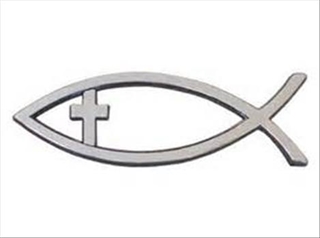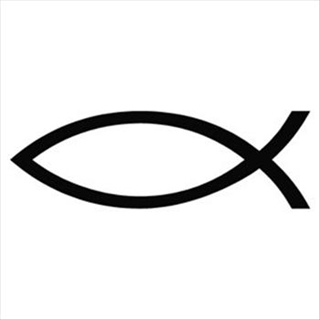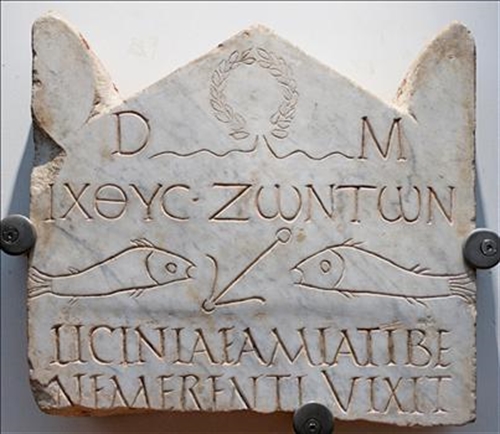Koine is the Greek word for "common." Koine Greek (also called New Testament Greek) was the form of the Greek language used from around 330 BC to AD 330. The books of the New Testament were originally written in Koine (pronounced COIN-nay) Greek.
(5) The Koine was born out of the conquests of Alexander the Great.
(1) He is revered as the master of logistics, a strategic and tactical genius, the consummate multicultural politician, and the ultimate visionary. As seen through occidental eyes, he is the enlightened warrior who brought Greek learning to a barbaric people and the romantic idealist who sought to harmonize the cultures of the East and the West.
(2)
First, his troops, which came from Athens as well as other Greek cities and regions, had to speak to one another. This close contact produced a melting pot Greek that inevitably softened the rough edges of some dialects and lost the subtleties of others. Second, the conquered cities and colonies learned Greek as a second language where it became the standard language of commerce and government existing alongside many local languages. This further increased its loss of subtleties and moved it toward greater explicitness (e.g., the repetition of a preposition with a second noun where Attic Greek was usually comfortable with a single preposition)....
(1)(4)Alexander carried the Attic-Ionic form of the language, along with Greek culture more generally, far into the Near East
(4) Under the leadership of Macedon, their newly formed common dialect was spoken from Egypt to Mesopotamia.
(3)
An eloquent modern illustration of that formidable Hellenizing achievement is contained in these deceptively simple lines by the poet Constantine Cavafy of Alexandria, Egypt in the year 200BC:
 Ephesians 4:3
Endeavouring to keep the unity of the Spirit in the bond of peace.
Ephesians 4:3
Endeavouring to keep the unity of the Spirit in the bond of peace.
We: the Alexandrians, the Antiochenes,
the Selecuians, and the numerous
other Hellenes of Egypt and Syria,
and those in Media, and those in Persia, and so many others.
With their extended dominions,
and the diverse endeavors toward judicious adaptations.
And the Greek koine language-
all the way in to Bactria we carried it, to the peoples of India.
(6)
Koine Greek became the lingua Franca of the whole Roman Empire by the first century AD...Even after Rome became the world power in the first century BC, Greek continued to penetrate distant lands. (This was due largely to Rome's policy of assimilation of cultures already in place, rather than destruction and replacement) ...Greek continued to be a universal language until at least the end of the first century AD. From about the second century on, Latin began to win out in Italy (among the populace)...
(1)
Ichthys is the Greek word for "fish". Alternative transliterations include Ichthus and Ikhthus. In English, this refers to a symbol consisting of two intersecting arcs, the ends of the right side extending beyond the meeting point so as to resemble the profile of a fish, used by early Christians as a secret Christian symbol and now known colloquially as the "sign of the fish" or the "Jesus fish.". An early circular ichthys symbol, created by combining the Greek letters ΙΧΘΥΣ, (Ichthys), is an acronym for "Ἰησοῦς Χριστός, Θεοῦ Υἱός, Σωτήρ", (Iēsous Christos, Theou Yios, Sōtēr), which translates into English as "Jesus Christ, God's Son, Saviour".
Iota (i) is the first letter of Iēsous (Ἰησοῦς), Greek for "Jesus".
Chi (ch) is the first letter of Christos (Χριστός), Greek for "anointed".
Theta (th) is the first letter of Theou (Θεοῦ), Greek for "God's", the genitive case of Θεóς, Theos, Greek for "God".
Ypsilon (y) is the first letter of (h)yios[3] (Υἱός), Greek for "Son".
Sigma (s) is the first letter of sōtēr (Σωτήρ), Greek for "Saviour".
This explanation is given - the generating sentence "Ίησοῦς Χειστός Θεοῦ Υἱός Σωτήρ" has 27 letters, i.e. 3 x 3 x 3, which indicated power. Historians say the 20th century use of the ichthys motif is an adaptation based on an Early Christian symbol which included a small cross for the eye or the Greek letters "ΙΧΘΥΣ". An ancient adaptation of ichthys is a wheel which contains the letters ΙΧΘΥΣ superimposed such that the result resembles an eight-spoked wheel.
 Fish in the Gospels
Fish in the GospelsFish are mentioned and given symbolic meaning several times in the Gospels. Several of Jesus' twelve Apostles were fishermen. He commissions them with the words "I will make you fishers of men".
At the feeding of the five thousand, a boy is brought to Jesus with "five small loaves and two fish". The question is asked, "But what are they, among so many?" Jesus multiplies the loaves and fish to feed the multitude.
In Matthew 13:47-50, the Parable of Drawing in the Net, Jesus compares God's decision on who will go to heaven or to hell ("the fiery furnace") at the end of this world to fishers sorting out their catch, keeping the good fish and throwing the bad fish away.
In John 21:11, it is related that the disciples fished all night but caught nothing. Jesus instructed them to cast the nets on the other side of the boat, and they drew in 153 fish.
A less commonly cited use of fish in Christ's life may be found in the words of Matthew 17:24-27, in which, upon being asked if his Teacher does not pay the temple (two-drachma) tax, Simon Peter answers, "Yes." Christ tells Peter to go to the water and cast a line. He says that a coin sufficient for the tax will be found in the fish's mouth. Peter does as told and finds the coin. The early church, ancient Christians, during their persecution by the Roman Empire in the first few centuries after Christ, used the fish symbol to mark meeting places and tombs or, to distinguish friends from foes:
"…when a Christian met a stranger in the road, the Christian sometimes drew one arc of the simple fish outline in the dirt. If the stranger drew the other arc, both believers knew they were in good company. Current bumper-sticker and business-card uses of the fish hearken back to this practice. The symbol is still used today to show that the bearer is a practicing Christian."—"Christianity Today, Elesha Coffman, Ask the Editors”
 Funerary stele with the inscription ΙΧΘΥC ΖΩΝΤΩΝ ("fish of the living"), early 3rd century, National Roman Museum
Funerary stele with the inscription ΙΧΘΥC ΖΩΝΤΩΝ ("fish of the living"), early 3rd century, National Roman MuseumThere are several other hypotheses as to why the fish was chosen. Some sources indicate that the earliest literary references came from the recommendation of Clement of Alexandria to his readers (Paedagogus, III, xi) to engrave their seals with the dove or fish. However, it can be inferred from Roman monumental sources such as, the Cappella Greca and the Sacrament Chapels of the catacomb of St. Callistus, that the fish symbol was known to Christians much earlier. Another probable explanation is that it is a reference to the scripture in which Jesus miraculously feeds 5,000 people with fish and bread (Matthew 14:15-21, Mark 6:30-44, Luke 9:12-17, and John 6:4-13). The Ichthys may also relate to Jesus or his disciples as "fishers of men" (e.g., Mark 1:17). Tertullian, in his treatise On Baptism, makes a pun on the word. Writing that "we little fishes, after the example of our ΙΧΘΥΣ Jesus Christ, are born in water." Still another explanation could be that it is a reference to The Sign of Jonah. Just like he was in the belly of a big fish, so Christ was crucified, entombed for three days, and then rose from the dead.
Revival and adaptations of the symbol , the "Jesus Fish", have become a symbol of Biblical Christianity. Today it can be seen as a decal or emblem on the rear of automobiles, or as pendants or necklaces as a sign that the owner is a Christian. It is incorporated into business logos or in business advertisements and listings in telephone books. It is also seen on clothing. Versions of this include an Ichthys with "Jesus" or "ΙΧΘΥΣ" in the center, or simply the Ichthys outlined by itself. This badge may also be seen in e-mail signatures.